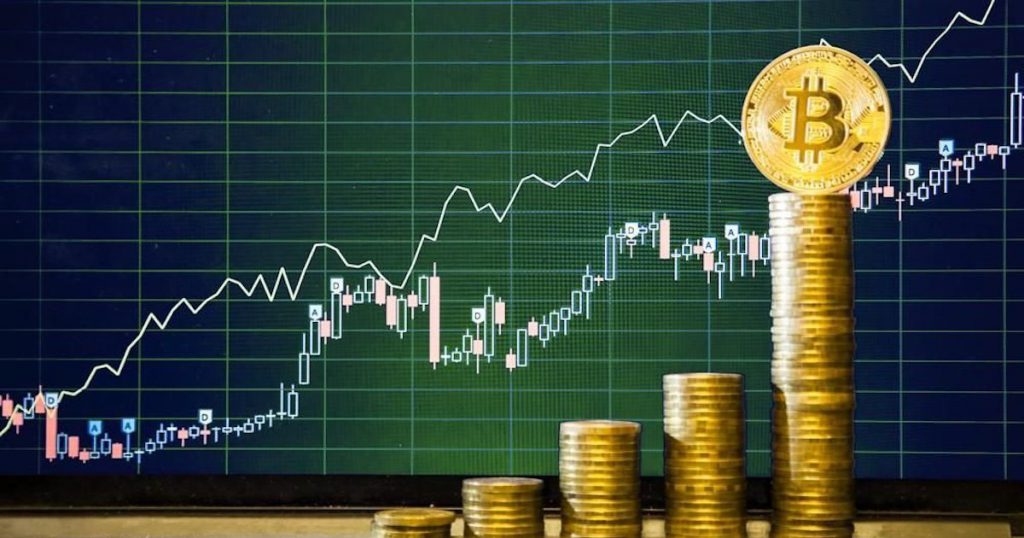(Disclaimer: All opinions expressed in this article belong solely to the writer)
BTC made headlines after a sudden jump from over US$34,000 to over US$40,000 yesterday, settling at around US$37,500, over 18 per cent higher than a week ago.
That in itself isn’t anything new or extraordinary, of course. As a matter of fact, what I am writing here isn’t going to be surprising to many — but, as a resident, cautious crypto skeptic, I think it’s also not something that is given much mainstream publicity, particularly in the current environment.
Despite the fact that we currently have more tools, apps, wallets, more sophisticated exchanges and even more cryptocurrencies than just a few years ago, the simple reality is that the entire market is maturing quite slowly.
In many ways, it is just like it was during the rally of 2017/18. Technological sophistication isn’t followed by functional sophistication, at least not on a sufficiently large scale thus far.
And there is one simple metric to show it: cross-currency correlation.
If you’re a keen observer, you would probably have noticed that pretty much all cryptocurrencies tend to move in tandem. When BTC is going up, so does every other coin. The same happens when it’s losing value.
Yesterday’s jump was no different and produced similar results, as you can see below:

Pretty much all currencies saw a rapid surge in their USD price to then suffer a drop, settling above the previous rates.
This phenomenon isn’t new, and has been observed for about as long as cryptocurrencies existed — though it tends to get more pronounced during high interest, bull markets involving more people than just technology nerds.
It has spawned many conspiracy theories that the crypto whales or major hedge funds collaborate in secret to pump and dump currencies as they please, to reap profits at the expense of the smaller traders, particularly as cryptocurrencies are largely unregulated and highly anonymous.
The answer may be quite a bit simpler.
The reality is that it shows how young and rough the entire market still is. That despite all of the seemingly vast differences in features, technology or even supply of the coins play a minor role, and all of them are largely treated as one asset class more than independent, competing tokens with highly distinct characteristics.
In the current reality, few people seem to be making investment decisions based on technological superiority of one coin over another and the demand is not yet driven by any real life use (since few actually need crypto to buy anything) either.
There are also both individuals and companies putting money into baskets of currencies, which further reinforces correlation between them.
And it is also visible with minor coins, that most people would not even be aware of, likely pointing to speculation determined by the moves of the dominant currencies like BTC or ETH.
What you see below is a chart showing the strength of correlation between various cryptocurrencies across 30 days versus one year (the 2nd image). Correlation is measured on a scale from -1.0 to 1.0, meaning that:
- When two currencies are correlated 1.0, they move in the same direction 100 per cent of the time
- At -1.0, they move in the opposite direction 100 per cent of the time
- 0.0 indicates they are independent of each other

As you can see, over the past month (it’s similar over a day and seven days) the strongest positive correlation is seen with Bitcoin — mostly 70 per cent to over 80 per cent of the time, other coins will follow the leader.
But more interestingly, pretty much all crypto coins are moving in tandem more than 50 per cent of the time, even in most exotic pairs.

When we look at the entire year however, factoring in the period before the current surge that started towards the end of 2020, the relationships between different coins are demonstrably weaker.
It suggests that the current bull market is driven largely by speculation, without any appreciable understanding of the differences between various currencies (contrary to how the trading looked beforehand). Any and every crypto becomes a buy until it follows the trends set by BTC and/or ETH.
The markets are flushed with dumb money seeking quick returns, largely ignoring the technological side of what particular cryptocurrencies offer.
Unsurprisingly, this has also spurred creation of many new spin-off tokens, which have often surged in value, even if there is no useful case for their existence.
Crypto will mature with the decline of Bitcoin
We will only be able to speak of the maturing of cryptofinance when different currencies are traded on the basis of their different applications or technological advantages and disadvantages. When fundamentals, instead of pure speculation or technical analysis looking for profitable patterns in a highly volatile environment, are driving their value.
When they become detached from Bitcoin or any other market leader and are able to hold their own.
BTC itself is a symbol of many ills of the nascent cryptofinance. Fundamentally, there isn’t any functional reason for its existence as it does not really make transactions in any way better, safer, faster or cheaper.
It’s expensive (often unpredictably so) as a medium of exchange, transactions take a long time to settle (and you can buy whatever you want with the fiat money you already have, that is accepted everywhere).
It has recently seen emphasis on its function as a store of value — but for that, it would still have to have some unique and practical use (gold, that it is often compared to, is at least a tangible, mineable resource).
Yet, because it started everything — it’s the “foundational” cryptocurrency and the most widely accepted one — it is still seen as the best point of reference, regardless of its technical limitations.
Decline in its importance will be one of the signs of evolution of the industry as it is solving more problems, building a stronger case for its existence.
Just like today, the strong correlation not only with BTC but between even seemingly unrelated, obscure coins, shows how still unsophisticated the crypto market is, the future weakening of this correlation is going to be one of the early signs of its maturing and possible mainstream adoption.
Cryptocurrency and blockchain technology is a key content pillar for Vulcan Post. Follow our coverage on the space here.
From 1 July 2021, Vulcan Post’s premium articles will be hidden behind a paywall. Subscribers will be able to enjoy exclusive articles with a deeper level of coverage and insight on verticals that include government technology, electric vehicles, cryptocurrency and e-commerce. You can check out our premium articles here and subscribe to us here.
Featured Image Credit: Tom Stepanov via Shutterstock











